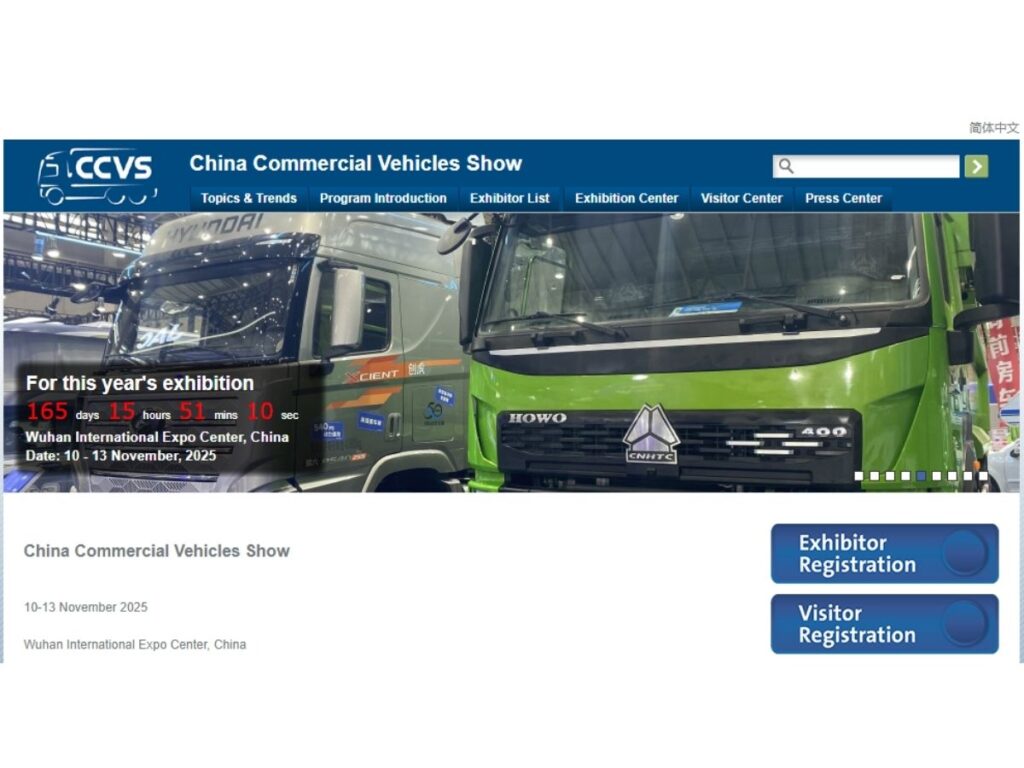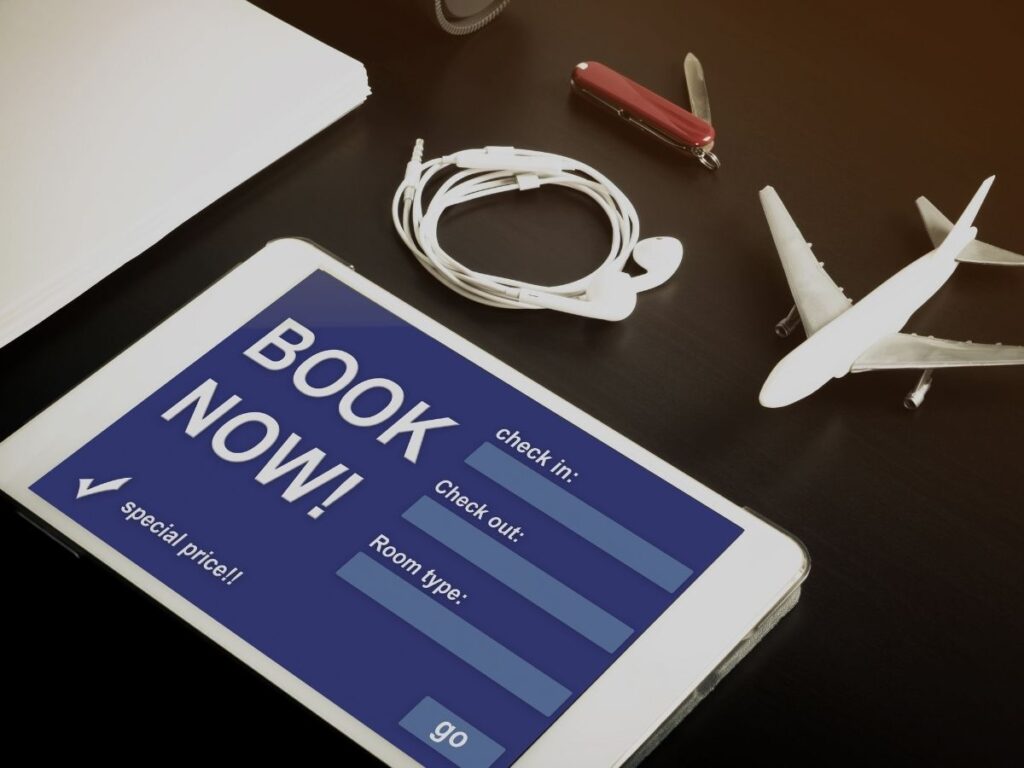Last year, I landed in Wuhan with a list of goals, three hours of sleep, and zero idea where Hall D was. As a business owner juggling logistics contracts and fleet upgrades, I knew I had one shot to make this trip count.
If you’re planning to attend the China Commercial Vehicles Show, don’t go in blind like I did.
This guide comes from real-world experience. I’ve made the rookie mistakes so you don’t have to—and I’ve learned how to turn this event into a high-ROI business trip.
In this article, you’ll get a step-by-step walkthrough to plan your visit smart—from registration and hotel booking to booth visits and follow-ups.
If your goal is to meet suppliers, compare solutions, or just make smarter buying decisions, this guide will get you there.
Let’s dive in!
1. Define Your Goals and Priorities
Before you book your flight, before you hit “register,” before you even start browsing the exhibitor list—you need to get clear on what success looks like for your business at this show.
Otherwise, you’re just walking a massive expo floor, hoping something clicks.
Let me be real with you—I learned this the hard way.
The first time I went to the China Commercial Vehicles Show, I had zero plan. I thought I’d “figure it out when I got there.” That cost me time, energy, and more importantly, business opportunities. I missed out on suppliers I later realized were perfect for our fleet. Why? Because I didn’t map out what I was looking for ahead of time.
Specify Your Visit
Ask yourself:
- What does my operation need in the next 6–12 months?
- Am I exploring new vehicle types? EVs? More durable machinery for harsh environments?
- Do I want to meet manufacturers, logistics partners, or tech providers?
- What kind of cost savings or performance gains am I targeting?
Write it down. Literally. This becomes your North Star at the show.
Prioritize Your Objectives
You’re not there to wander. You’re there to solve real problems and build better systems for your business. Whether it’s improving delivery times, reducing downtime, or expanding your fleet with sustainable options—name it.
Pick your top 2–3 goals. That’s your mission. And when you’re clear on that?
Every booth visit, meeting, or demo suddenly has a purpose. You’re not just attending—you’re executing a plan.

2. Plan Your Show Schedule
If you’re just “showing up to see what happens,” you’re already wasting time.
This isn’t a walk-through-the-mall kind of event — it’s a strategic business opportunity packed into 2 or 3 days. With hundreds of booths, live demos, and forums happening at the same time, your schedule needs to work for you, not against you.
I’ve had shows where I nailed four supplier meetings before lunch and walked away with pricing sheets, sample quotes, and even a trial deal. I’ve also had shows where I spent half the day figuring out where to go next. The difference? Planning.
Lock In High-Value Meetings
Start with the non-negotiables.
- Prioritize meetings with key suppliers or tech partners
- Use the matchmaking tool or contact vendors in advance to set appointment times
- Book early slots — mornings are sharper, less chaotic
Keep buffer time between meetings. Nothing kills momentum like rushing across four halls with 30 seconds to spare.
Balance Booth Visits with Live Events
There’s more than just vendor booths.
- Industry panels and keynote forums offer insight into market trends and future regulations
- Live product demos let you see tech in action and ask questions on the spot
- Networking lunches or VIP sessions can lead to unexpected introductions
Slot these around your top meetings — especially if you’re scouting innovation or building partnerships.
Structure Your Day for Energy
You’re going to walk miles. Don’t pretend you won’t.
- Mornings: Lock in focused meetings
- Midday: Booth visits, hands-on demos, refueling
- Afternoons: Forums, follow-ups, or less time-sensitive walk-ins
- End of day: Quick debrief and sort contact info while it’s still fresh
Use Tech to Stay on Track
- Set calendar alerts with booth numbers
- Use the event app’s map and reminders
- Take photos of business cards and booths to stay organized
You’re not just attending — you’re working. A smart schedule makes the difference between a busy day and a productive one.

3. Register Early and Choose the Right Pass
This isn’t just another trade show—it’s where pivotal business decisions are made. Registering early isn’t merely a formality; it’s your strategic entry point.
I learned this firsthand.
Delaying my registration once cost me VIP access, inflated hotel rates, and exclusion from the matchmaking program. That misstep underscored the importance of timely action.
Registration Options
Your choice here shapes your entire experience:
- General Visitor: Suitable for first-time attendees or those exploring the event. Limited access to business services and meetings.
- Business Visitor: Designed for professionals aiming to compare products and engage with suppliers. Includes basic matchmaking services and entry to most forums.
- VIP Buyer: Offers priority access, private meeting lounges, and concierge matchmaking. Ideal for decision-makers, procurement leads, and operations executives.
How to Register
- Online Registration: Visit the official show website: China Commercial Vehicles Show Registration
- Profile Completion: Provide a detailed business profile to enhance matchmaking accuracy.
- Pass Selection: Choose the pass that aligns with your objectives.
- Document Upload: Submit necessary business credentials as required.
Pro Tip: Registering 4–6 weeks in advance grants access to early planning tools and agenda features.

4. Book Your Travel and Accommodations
Once you’re registered, the clock’s ticking. Flights, hotels, and visa paperwork aren’t things you want to scramble for last minute — especially when you’ve got business on the line.
I’ve done the “wing it and hope for the best” version. Trust me, showing up jetlagged with a hotel 40 minutes from the venue is not the power move it sounds like.
Travel Planning
The China Commercial Vehicles Show is typically held at the Wuhan International Expo Center. Here’s how to plan your route:
- Closest Airport: Wuhan Tianhe International Airport (WUH) – major domestic and international connections
- Rail Options: Wuhan has high-speed rail access from major cities like Beijing, Shanghai, Guangzhou
- Local Transport: Use Didi (China’s ride-hailing app) or arrange hotel shuttles in advance
Book arrival at least one day before the event opens gives you time to recover and scout the venue.
Hotel Options
You want to be close, within 15–20 minutes of the expo center. That makes early mornings and post-show debriefs a lot easier.
- Look for hotels in Hanyang District, where the venue is located
- Popular business-class options:
- Marco Polo Wuhan
- Hilton Wuhan Riverside
- Holiday Inn Wuhan Riverside
- Confirm if they offer shuttle service to the expo (some do for big events like this)
Visa Requirements
If you’re coming from outside China, you’ll most likely need a Business (M) Visa. What you’ll need:
- Valid passport
- Invitation letter from ta he show organizer (usually available after registration)
- Completed visa application form
- Proof of employment or business registration
Important: Start this process at least 4–6 weeks before the event. Some embassies are slower than others.

5. Prepare Your Essentials
You don’t want to be that person, the one stuck at a charging station, fumbling for a pen, or digging through a bag for business cards that somehow vanished mid-morning.
I’ve been there.
Day one of the shows, my phone was dead by noon, my feet were killing me, and I forgot the one thing that mattered most: my meeting notes. Let’s make sure that doesn’t happen to you.
Here’s What to Bring — and Why It Matters:
- Business Cards: Still essential in China. Bring more than you think you’ll need. (And yes, they still exchange them with two hands — it’s a small detail, but it matters.)
- Mobile Charger or Power Bank: You’ll be snapping photos, checking maps, using translation apps — your battery won’t make it to lunch without backup.
- Notebook or Digital Note-Taking App: Every conversation leads somewhere. Don’t rely on memory alone.
- Water Bottle & Snacks: You’ll be walking a lot. Lines for food and drinks can get long mid-day.
- Comfortable Shoes: This isn’t the time for dress shoes that hurt after 30 minutes. You’ll be covering serious ground.
- Small Tote or Lightweight Backpack: Useful for catalogs, brochures, and the random swag you’ll pick up.
- Review the Exhibitor List and Floor Plan
The China Commercial Vehicles Show is massive. Hundreds of exhibitors. Multiple halls. And more product categories than you can process on the fly. Without a strategy, you’ll waste time, miss key suppliers, and leave the show with more confusion than clarity.
I made that mistake once.
I spent 2 hours looking for a manufacturer I thought was in Hall B, but they were in Hall F. I didn’t find them until the next day — and by then, their schedule was packed.
Start With the Exhibitor List
Once you’re registered, visit the official site or use the show app to access the full exhibitor list.
- Sort by Industry Relevance: Focus on your vertical: construction equipment, EV trucks, last-mile solutions, refrigerated logistics, etc.
- Highlight Must-See Companies: Pick 10–15 that match your business goals. These are your non-negotiables.
- Check for New Product Launches: Some booths host live demos or product reveals, those can be high-value stops if you’re scouting innovation.
Map It Out With the Floor Plan
Now take that hit list and plot it out on the actual floor map.
- Group Booth Visits by Hall: Minimize backtracking and time lost in crowds.
- Identify Strategic Zones: Shows like this often organized by themes:
- New Energy Vehicles
- Smart Logistics
- Heavy-Duty Fleets
- Spare Parts and Aftermarket Services
- Locate Meeting Zones and Lounges: Block out time for breaks or private chats near those areas.
7. Networking Tips
Every handshake at the China Commercial Vehicles Show could be a door to better pricing, smarter logistics, or even long-term partnerships. But here’s the thing: networking at a show this size doesn’t happen by luck — it happens by intent.
I’ve walked this floor solo and with a team. I’ve had days where I made real supplier deals… and others where I just ended up with a pile of brochures and no next steps. The difference was always how I approached people.
Be Clear
People respect directness at these shows. You don’t need to give a sales pitch — but you do need to communicate your intent.
- “We’re sourcing EV fleets for cold chain logistics.”
- “I’m looking for long-haul options under a certain budget.”
- “We’re expanding into western China and need new suppliers.”
That level of clarity makes it easy for vendors (and other attendees) to connect you with the right people.
Use Matchmaking Tools
If you registered early (like we talked about in Step 2), you may have access to the official matchmaking system. Don’t skip this.
- Schedule meetings ahead of time
- Look for suppliers who match your specific criteria
- Check for private buyer lounges or quiet areas to meet
You’re not here to wander. You’re here to maximize every hour.
Keep It Professional
People do business with people. Be human.
- Ask questions beyond just specs and pricing
- Show curiosity about their tech, process, or market focus
- If there’s a language barrier, use a translation app and stay patient — effort goes a long way
Follow Up in Real Time
At the end of each day:
- Organize business cards
- Send a quick “good to meet you” message via WeChat or email
- Note down follow-up actions before you forget the conversation
8. Follow Up After the Show
The show may be over, but your work isn’t.
This is where most businesses drop the ball — and where you can get ahead. You didn’t just fly across the world, walk a packed expo, and shake hands with decision-makers to let those conversations fade into inbox limbo.
I’ve seen it happen. I’ve done it. And I’ve also seen what happens when you follow up the right way: faster quotes, better deals, and supplier relationships that stick.
Sort and Prioritize Your Contacts
Don’t wait until “next week.” While it’s fresh:
- Go through your business cards and meeting notes
- Tag contacts as High, Medium, or Low priority
- Note specific interests or next steps — even a few quick bullet points help
Use a spreadsheet, CRM, or even a simple doc. Just make it easy to take action.
Send Thoughtful Follow-Ups — Not Generic Emails
Reach out within 3–5 business days. Mention where you met and what you discussed and reiterate what your company is looking for. Ask directly for the next step, pricing sheet, digital catalog, test order, etc. If you promised to send something, a spec, a brief, your company profile — do it.
Schedule Internal Debriefs
Especially if you attended with your team.
- Share notes and impressions
- Review supplier materials
- Discuss which leads are worth pursuing now, and which are for later
This turns loose info into a real procurement strategy.
Conclusion
I walked in without a plan, and I walked out with regrets. That’s why I created this guide so your experience can be better.
You’ve learned how to prepare, what to prioritize, and how to get value long after the show ends. Every step is here.
Now it’s your turn to put it in motion.
Need a second set of eyes on your plan?
Contact us today, let’s get you set up right.


